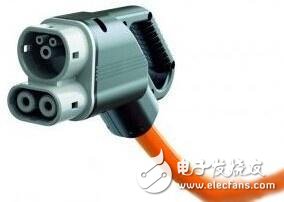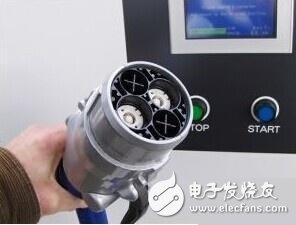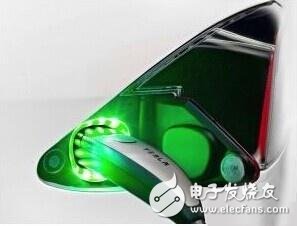Energy-saving and environmentally-friendly electric vehicles have become an inevitable trend in the automotive industry. However, while national car companies are concentrating on the development of electric vehicle technology, the charging standards for electric vehicles are also an important factor affecting their popularity. As electric vehicles are receiving more and more support in various countries, there are more and more charging stations, and national standards have already faced direct conflicts. Here we will sort out the four major charging connector standards currently on the market.
1, Combo

The Combo socket allows for slow charging and fast charging of electric vehicles. It is the most widely used socket type in Europe, including Audi, BMW, Chrysler, Daimler, Ford, General Motors, Porsche and Volkswagen. SAE (American Society of Automotive Engineers) ) The charging interface developed.
On October 2, 2012, the SAE J1772 revised draft voted by the SAE committee concerned became the only official DC charging standard in the world. The standard was introduced to change the current status of the hybrid charging system and to increase consumer enthusiasm for the purchase of electric vehicles. Based on the J1772 revision, the standard for DC fast charging is Combo Connector.
The previous version of the standard (developed in 2010) specifies the specifications of the basic J1772 connector for AC charging, with a low level of charge (AC Level 1 for 120V and Level 2 for 240V). This basic connector has been widely used today and is compatible with Nissan Leaf, Chevrolet Volt and Mitsubishi i-MiEV. In addition to all the original functions, the Combo Connector in the new J1772 standard, which was developed in 2012, has two additional pins for DC fast charging, but it is not compatible with the old electric cars currently produced.
Advantages: The biggest benefit of the Combo Connector is that future car manufacturers can use a socket on their new models, not only for the first generation of smaller basic AC connectors, but also for the second generation of larger Combo Connectors. The latter can supply both DC and AC currents, charging at two different speeds.
Disadvantages: In the fast charge mode, the charging station is required to provide up to 500 volts and 200 amps of current.
2, CHAdeMO

CHAdeMO is the abbreviation of CHArge de Move. It is a CHAdeMO socket supported by Nissan and Mitsubishi Motors. The translation of CHAdeMO from Japanese means "the charging time is short as a tea break." This DC fast charging socket can provide a charging capacity of up to 50kw.
Electric vehicle models that support this charging standard include: Nissan Leaf, Mitsubishi Outlander Plug-in Hybrid, Citroen C-ZERO, Peugeot iON, Citroen Berlingo, Peugeot Partner, Mitsubishi i-MiEV, Mitsubishi MINICAB-MiEV, Mitsubishi MINICAB-MiEV Truck , Honda Fit electric version, Mazda DEMIO EV, Subaru Stella plug-in hybrid car, Nissan eEV200 and so on. It should be noted here that Nissan Leaf and Mitsubishi i-MiEV electric vehicles have two different charging sockets, one for the basic J1772 connector, which is the Combo connector described in the first part; the other is for Japan's native CHAdeMO standard connector.
The fast charging method adopted by CHAdeMO is shown in the figure, and the current is controlled by the CAN bus signal of the car. That is, while monitoring the battery state, the current value required for charging is calculated in real time, and a notification is sent to the charger through the communication line; the fast charger receives the current command from the car in time, and supplies the current according to the specified value.
The battery management system monitors the battery condition while controlling the current in real time, fully realizing the functions required for fast and safe charging, ensuring that charging is not limited by battery versatility. In Japan, 1,154 sets of quick chargers installed in accordance with the CHAdeMO standard are put into use. In the United States, CHAdeMO's charging stations have also been widely spread. The latest data from the US Department of Energy shows that there are 1,344 CHAdeMO AC fast charging stations in the United States.
Advantages: CHAdeMO uses the CAN bus as the communication interface in addition to the data control line. Because of its superior anti-noise performance and high error detection capability, communication stability and reliability are high. Its good charging safety record has been recognized by the industry.
Disadvantages: CHAdeMO was originally designed with a charging output of 100 kW and the connector is very bulky, but the output power of the charging car is only 50 kW.
3. Tesla

Tesla has its own charging standard, which claims to be able to run more than 300 kilometers in 30 minutes. Therefore, its charging socket can have a maximum capacity of 120kw and a maximum current of 80A.
Tesla currently has 908 supercharge stations in the United States. In order to enter China, Tesla has also established 7 super charging stations in China, 3 in Shanghai, 2 in Beijing, 1 in Hangzhou and 1 in Shenzhen. In addition, in order to better integrate into various regions, Tesla plans to abandon the control of charging standards and adopt the national standards of various countries, which have been implemented in China.
Dual Channel Brushless Dc Motor Controller
Dc Controller,Dc Speed Controller,Brushless Dc Controller,Dual Channel Brushless Dc Motor Controller
Jinan Keya Electron Science And Technology Co., Ltd. , https://www.keyaservo.com
